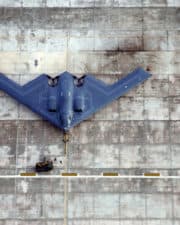When it comes to powering the marvels of modern aviation, the significance of aircraft engines cannot be overstated. These engineering marvels are the beating hearts of the world’s most iconic airplanes, propelling us across vast distances and into the boundless skies above. In our ever-evolving world of aviation, the competition among aircraft engine manufacturers to create the most powerful, efficient, and reliable engines has been nothing short of awe-inspiring.
The evolution of aircraft engines has been a remarkable journey spanning over a century, marked by technological breakthroughs, innovation, and a relentless pursuit of improved performance, efficiency, and safety. From the Wright brothers’ first powered flight in 1903 to the sophisticated engines that power today’s modern aircraft, the history of aircraft engines is a testament to human ingenuity and engineering prowess.
In recent decades, there has been a growing emphasis on environmentally friendly engines, with a focus on reducing emissions and noise pollution. Modern engines incorporate advanced materials, computerized control systems, and aerodynamic design improvements to achieve these goals.
The evolution of aircraft engines is an ongoing process, with manufacturers continually pushing the boundaries of what is possible. As we move into the future, innovations in propulsion, including electric and hybrid-electric systems, promise to reshape the aviation landscape, further enhancing efficiency and sustainability in the world of flight.
Today, we look at the largest aircraft engine manufacturers, where cutting-edge technology meets the art of flight. We will explore the top six industry giants, each with its own legacy of innovation and excellence. From the iconic General Electric (GE) Aviation to the craftsmanship of Rolls-Royce, and the relentless pursuit of perfection by Pratt & Whitney.
Join us on this journey through the skies and the world of engines that keep us soaring, as we shine a spotlight on the leaders who continue to push the boundaries of what is possible in aviation.
General Electric (GE) Aviation
GE Aviation has a storied history in the aerospace industry, dating back to the early days of aviation. They are renowned for their cutting-edge technology and innovation, producing engines like the GE90 and GEnx series that power many of the world’s wide-body commercial aircraft.
In addition to their commercial offerings, GE Aviation plays a vital role in military aviation, with engines like the F110 and F414 used in fighter jets. They have also been at the forefront of developing advanced materials and digital technologies to improve engine performance, fuel efficiency, and maintenance, making them a global leader in the industry.
Rolls-Royce
Rolls-Royce has a heritage of engineering excellence that spans over a century. Their high-performance jet engines, including the Trent series, are synonymous with quality and reliability. These engines are integral to numerous wide-body commercial aircraft like the Boeing 787 and Airbus A350, offering exceptional fuel efficiency and reduced environmental impact.
Rolls-Royce is also a trusted supplier for military applications, with engines like the Adour and AE 2100 powering various fighter jets and transport aircraft worldwide. Their commitment to research and development has cemented their position as a leading force in aerospace technology.
Pratt & Whitney
Pratt & Whitney, a subsidiary of Raytheon Technologies, boasts a rich history of aviation innovations. Their engines are essential components of both commercial and military aviation.
For commercial aircraft, Pratt & Whitney’s geared turbofan engine, known as the PW1000G, has gained significant recognition for its fuel efficiency and reduced noise emissions.
In the military sector, the F135 engine powers the F-35 Lightning II, one of the most advanced fighter jets globally. Pratt & Whitney’s dedication to sustainability and eco-friendly solutions further underscores their influence in the aerospace landscape.
CFM International
CFM International, a partnership between General Electric (GE) and Safran Aircraft Engines, specializes in engines for narrow-body commercial aircraft. Their CFM56 engine family has been a workhorse for decades, powering aircraft like the Boeing 737 and Airbus A320 series.
The Leap engine series, developed as a successor to the CFM56, incorporates advanced technology for improved fuel efficiency and reduced emissions. CFM International’s commitment to producing efficient, reliable engines for the heart of the airline industry has earned them a solid reputation in the field.
Safran Aircraft Engines
As a French aerospace powerhouse, Safran Aircraft Engines is a key player in the manufacturing of aircraft engines, particularly in the military and commercial sectors. They have a strong presence in military aviation, providing engines for aircraft such as the Rafale fighter and A400M transport plane.
In the commercial realm, they have contributed to programs like the CFM56 and the Leap engine series, collaborating with GE through CFM International. Safran Aircraft Engines’ relentless pursuit of technological advancements and environmental sustainability has positioned them as a leader in the aerospace engine market.
Honeywell Aerospace
Honeywell Aerospace is recognized for its diverse range of engines and propulsion systems used in various aircraft segments. They are renowned for their work in business aviation, where engines like the TFE731 and HTF7000 power various private jets. Additionally, Honeywell Aerospace’s propulsion systems are integral to regional aircraft, offering reliability and efficiency.
Their innovative technologies, such as the HTF1000 turbofan engine, highlight their commitment to enhancing aircraft performance and passenger experience. Honeywell Aerospace’s solutions extend beyond engines, encompassing avionics, safety systems, and connected technologies, making them a valuable partner for the aerospace industry.
Related Posts













